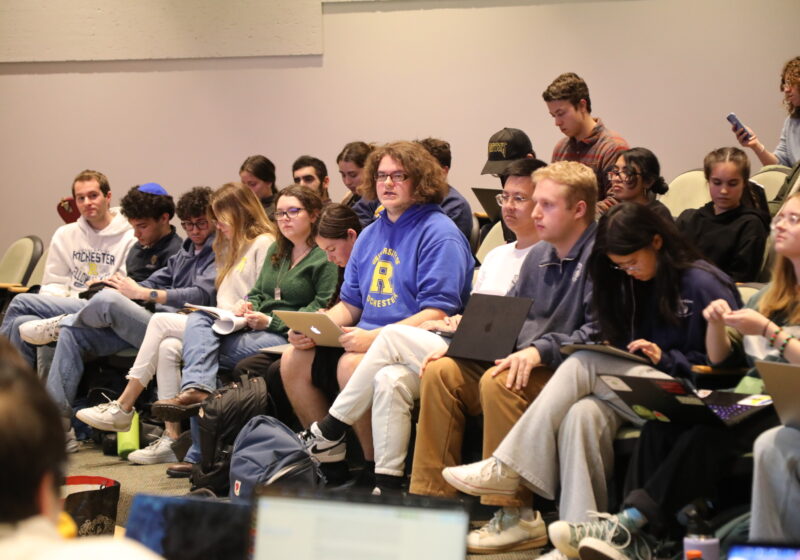The increased use of ecstasy, a popular drug among young adults, has raised concern among medical officials on many college campuses.
In response to the alarming results of such nationwide studies, University Health Services conducts a survey every two years in order to compare our students’ drug habits to the national statistics.
The most recent survey, conducted in the fall of 2001, reported that eight percent of students had used ecstasy within the past year, and only one percent of students had used regularly — at least once a week.
The study, which surveyed 600 undergraduates via the Internet, shows that ecstasy use on UR’s campus is actually below the national average in all categories.
Most often taken in pill or tablet form, ecstasy is a stimulant that results in severe side-effects, both psychological and physical.
Ecstasy users often suffer psychologically from confusion, anxiety, sleeplessness and paranoia.
At the same time, they may physically be feeling the effects of muscle tension, nausea, faintness, sweating or chills, blurred vision and tremors.
As reported by the Office of National Drug Policy, ecstacy’s distortion of natural serotonin levels prevents the body from regulating aggression, mood, sleep and sexual activity. After taking an ecstasy pill, users are more likely to feel unnaturally high amounts of energy and increased sexual arousal.
These feelings of euphoria allow people to dance all night at clubs or raves without feeling tired — one reason the drug has been nicknamed “the party pill.”
However, when combined with the drug’s potential to sharply increase body temperature, such hot crowded atmospheres can quickly become scenes of sudden fatalities due to muscle breakdown and kidney and heart failure.
According to the 2001 National Household Survey on Drug Abuse conducted by the U.S. Department of Health and Human Services, the estimated number of Americans age 12 or older who have tried ecstasy is 8.1 million — up from 6.5 million in 2000.
According to the University of Michigan’s annual Monitoring the Future study, in 2002, 14.7 percent of college students had tried ecstacy at least once in their lifetime, 9.2 percent had used within the last year and 1.5 percent used within the last month. These are by far the highest rates of any age bracket.
“We sometimes overestimate the use of more serious drugs such as ecstasy because if we see one or two people using it at a party of one hundred, those are the people we remember,” Health Educator for UHS Nancy Reynolds said.
“We forget to take into account the other 98 who are not risking the dangerous effects of ecstasy,” she added.
Fitzgerald can be reached at cfitzgerald@campustimes.org.


